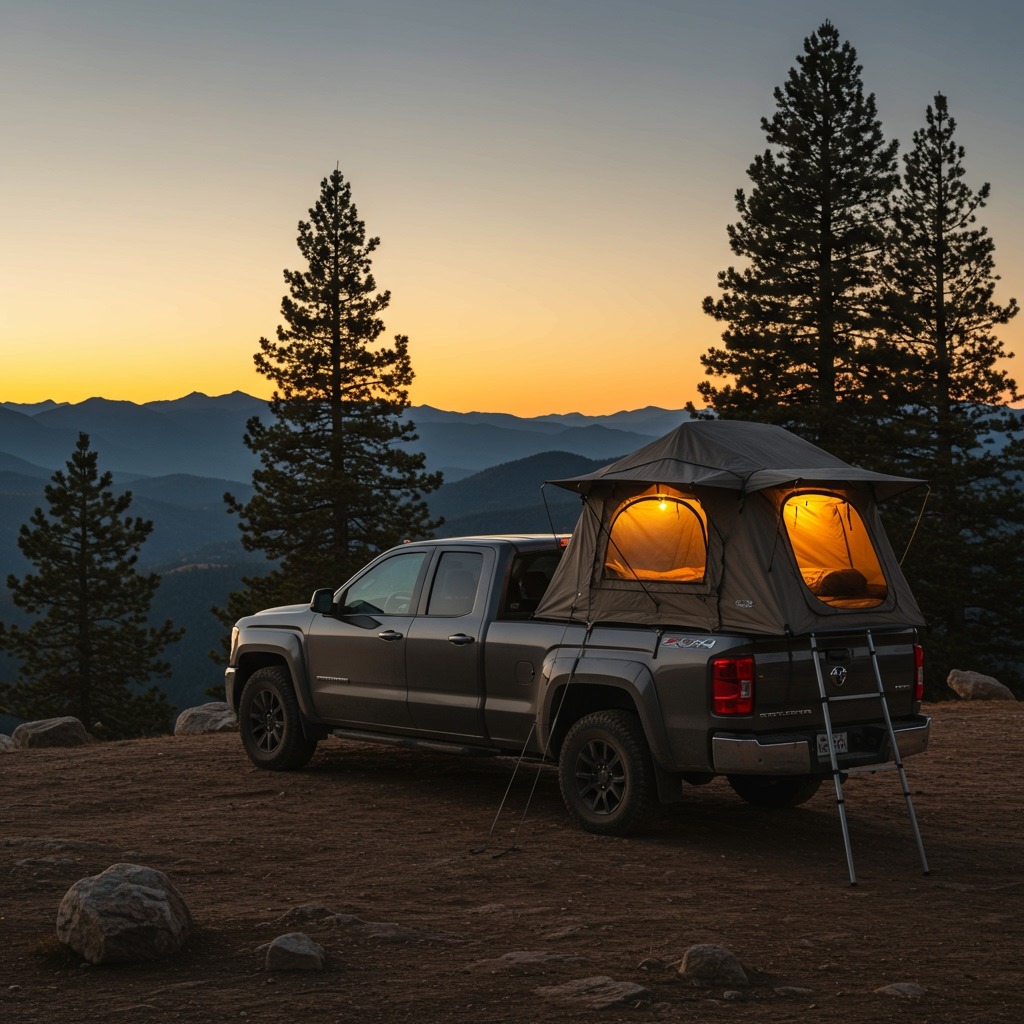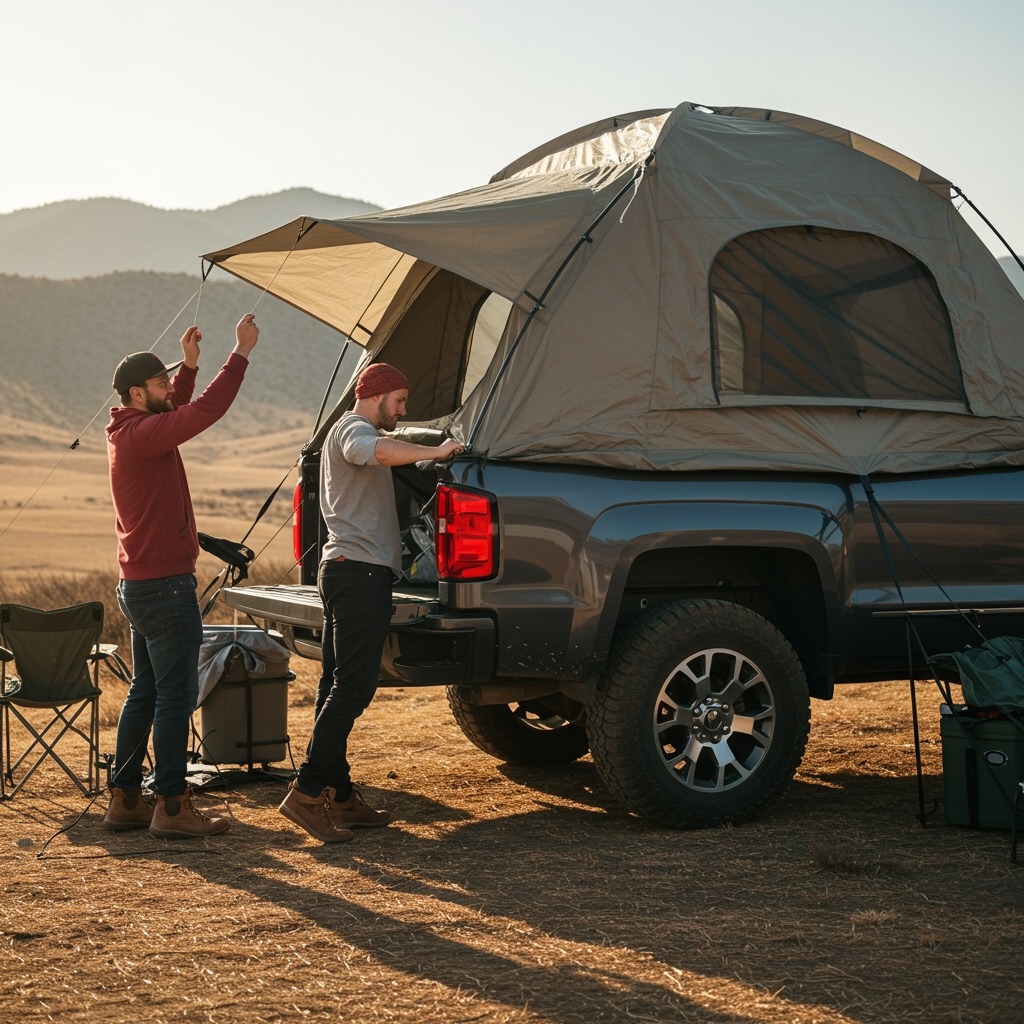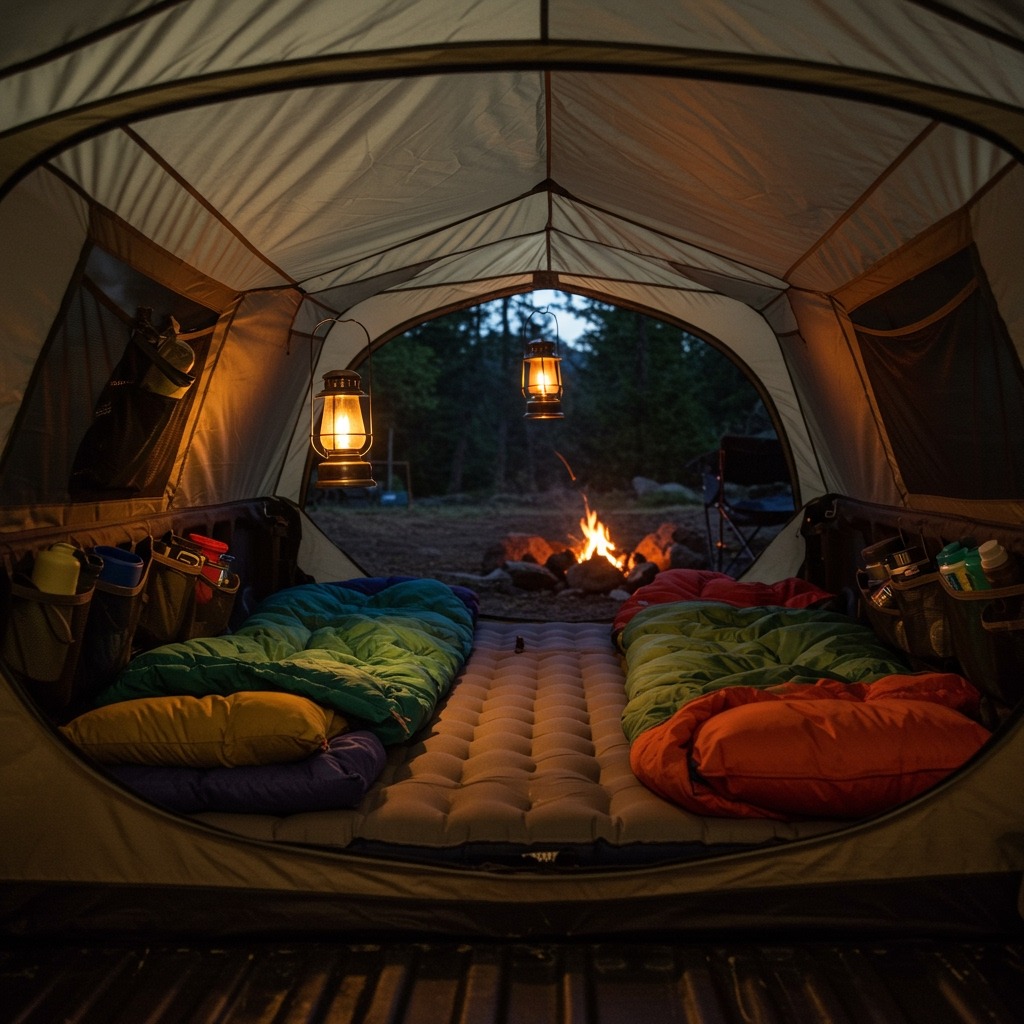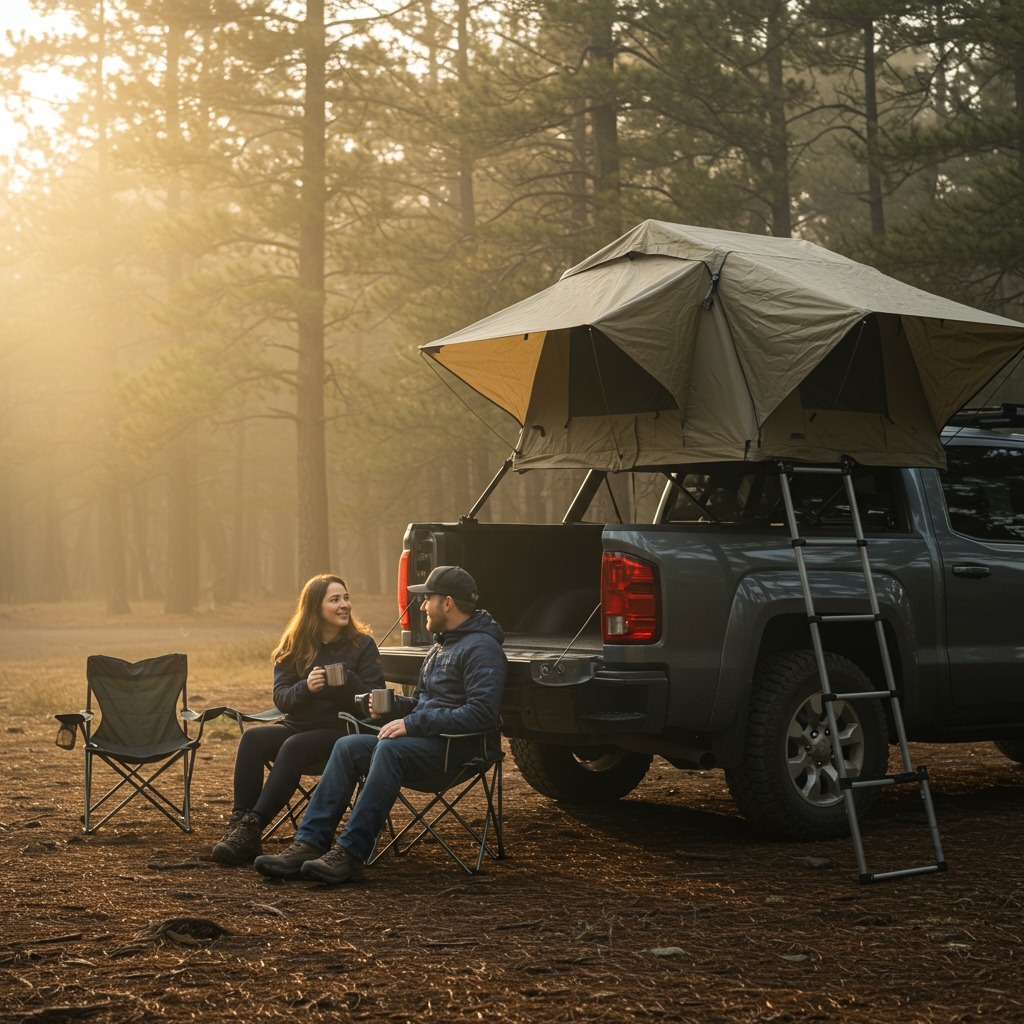Ever dreamed of rolling into your campsite, throwing open the back of your truck, and having your “home” ready in minutes? If you love the idea of camping but aren’t quite ready for an RV, or you just want to escape the critters and cold ground of a traditional tent, then you need to know about the truck bed tent. This isn’t just a gimmick; it’s a game-changer for outdoor enthusiasts who rely on their pickup.
A truck bed tent transforms your pickup into a secure, elevated sleeping platform, offering comfort and convenience that ground tents just can’t match. No more searching for flat, dry ground or worrying about water runoff. Your campsite is literally wherever you park your truck. But is a truck bed tent right for your adventures? How do you pick one, and what’s the secret to setting it up like a pro? Get ready to unlock a new level of camping freedom. I’ll walk you through everything you need to know, from selecting the perfect tent for your rig to making your truck bed feel like a five-star hotel.

Why Choose a Truck Bed Tent? The Advantages
Why are more and more campers ditching the ground tent for an elevated experience? The benefits are clear and compelling.
A. Off-the-Ground Comfort & Protection
This is, hands down, one of the biggest draws. Think about it:
- Critter-Free Zone: You’re elevated and enclosed, which means fewer worries about creepy crawlies, snakes, or small animals making their way into your sleeping space. This is a huge perk, especially compared to ground-level options in primitive camping scenarios.
- Mud and Water Be Gone: No more waking up to a soggy tent floor from an unexpected downpour or camping on uneven, muddy ground. Your truck bed provides a clean, dry, and consistently flat platform.
- Warmer in Colder Conditions: Being off the cold ground means you retain more body heat, making those chilly nights significantly more comfortable. It’s a natural insulator.
B. Portability & Mobility
Your campsite becomes truly mobile.
- Goes Where Your Truck Goes: Wherever your truck can drive, your tent can follow. This opens up opportunities for dispersed camping, off-road adventures, and reaching remote, scenic spots that traditional RVs or even trailers can’t access.
- Quick Setup/Takedown: While not instant, many truck bed tents set up much faster than complex ground tents with multiple poles and stakes. You’re typically looking at 15-30 minutes, freeing up more time for exploring or relaxing. This speed makes truck bed camping incredibly efficient.
C. Security & Storage
Your truck offers inherent advantages.
- Inherent Security: Your truck’s tailgate and locking mechanisms add a layer of security that a fabric ground tent simply can’t provide. This is a big plus for securing your gear while you’re out enjoying things to do while camping.
- Under-Tent Storage: Many truck bed tents leave the tailgate accessible or have a floor that can be removed, allowing you to store gear directly in the truck bed, keeping it dry and out of sight.
D. Versatility
A truck bed tent transforms your vehicle.
- Mobile Basecamp: Your truck becomes a self-contained unit, perfect for fishing trips, hunting excursions, or even just weekend getaways where you want minimal setup.
- Beyond Campgrounds: You’re not tied to established campgrounds. This freedom is a major perk for exploring new areas.
What to Consider Before You Buy: Finding Your Perfect Truck Bed Tent

Choosing the right truck bed tent isn’t a one-size-fits-all decision. Your truck, your camping style, and your budget all play a role. Here’s what to look for:
A. Truck Compatibility
This is the most critical factor. Not all truck bed tents fit all trucks.
- Specific Tent Sizes: Tents are designed for specific truck bed lengths (short, standard, or long) and even for different truck models (e.g., specific tents for full-size pickups vs. compact trucks). Measure your bed accurately.
- Cab vs. Non-Cab Rear Designs: Some tents extend over the cab, offering more space, while others fit snugly within the truck bed walls. Know your preference.
B. Tent Style & Design
Truck bed tents come in various shapes and configurations.
- Dome vs. Wedge vs. Pop-up:
- Dome: Most common, resembles a standard tent, offers good headroom.
- Wedge: Often lower profile, might offer less headroom but can be more aerodynamic.
- Pop-up: Some newer designs offer instant setup, though often at a higher price point.
- Full Truck Bed Enclosure vs. Partial: Most fully enclose the bed, but some minimalist designs might leave the tailgate open or offer less overhead coverage.
C. Material & Durability
Your tent needs to stand up to the elements.
- Waterproofing: Look for tents with a high denier rating (e.g., 68D, 150D, 210D) for the fabric, which indicates thickness and durability. Pay attention to fully taped seams for superior waterproofing.
- Pole Materials: Aluminum poles are generally lighter and stronger than fiberglass, but also more expensive. Fiberglass is common and durable for most uses.
- Zippers and Mesh Quality: These are common failure points. Look for heavy-duty zippers and fine, durable mesh on windows and doors to keep insects out.
D. Features & Accessories
The little things make a big difference.
- Windows, Vents, Rainfly: Proper ventilation is crucial to prevent condensation. Multiple windows and vents help with airflow. A full-coverage rainfly is essential for wet weather.
- Internal Pockets, Lantern Loops: Small features like gear lofts, internal pockets for organization, and lantern loops add convenience.
- Awning Attachments: Some tents offer optional awnings or vestibules for extra covered space outside the tent.
- Port for Truck Bed Access: A small pass-through window or zippered opening can be handy for accessing items in your truck bed without leaving the tent.
E. Ease of Setup
You want to spend more time camping, less time assembling.
- Clips vs. Sleeves: Pole clips are generally faster and easier to use than traditional pole sleeves, especially in cold weather.
- Color-Coded Poles: Many tents use color-coded poles and sleeves to simplify the setup process.
- Setup Video: Check the manufacturer’s website or YouTube for setup videos. Seeing it done can clarify the process. For example, Napier Tents, a popular brand, often provides detailed setup guides on their product pages or YouTube channel like this one: Napier Outdoors Tent Setup (external link).
Setting Up Your Truck Bed Tent: A Step-by-Step Guide

Don’t let the idea of setting up a tent on your truck bed intimidate you. It’s straightforward once you know the steps.
A. Clear & Prep Your Truck Bed
- Remove Gear: Take everything out of your truck bed. You want a completely clear surface.
- Sweep Out Debris: Get rid of any dirt, leaves, or sharp objects.
- Consider Protection: While many tents have a built-in floor, a tarp or thin mat underneath can add an extra layer of protection for both your truck bed and the tent floor.
B. Assemble Poles & Lay Out Tent
- Read Instructions: Every tent is slightly different. Briefly review your tent’s specific instructions.
- Assemble Poles: Connect your tent poles according to the manufacturer’s guide.
- Orient the Tent: Lay the tent fabric out in your truck bed. Make sure the door is facing the direction you want it (usually towards the tailgate for easy entry/exit).
C. Raise the Tent & Attach to Truck
- Feed Poles: Carefully feed the assembled poles through the tent sleeves or attach them to the clips. This will give the tent its shape.
- Secure Straps: This is where your tent attaches to your truck. Connect the tent’s straps, clips, or buckles to specific points on your truck. This might be the wheel wells, under the truck frame, or around the bumper. Cinch them down securely but don’t over-tighten, as this can strain the fabric.
- Adjust Tension: Once attached, adjust straps evenly to ensure the tent is taut and symmetrical.
D. Add Rainfly & Personal Touches
- Install Rainfly: If bad weather is a possibility (or even if not, for dew protection), drape the rainfly over the tent and secure it according to instructions. This is crucial for keeping your sleeping area dry, especially if you’re experiencing camping in the rain.
- Interior Setup: Now for the fun part! Inflate your air mattress or lay out your sleeping pads. Add your sleeping bags, pillows, and any internal lights or gear organization.
Maximizing Your Truck Bed Tent Experience
You’ve got your tent up; now let’s make it the best possible experience.
A. Bed Preparation
- Air Mattress or Sleeping Pad: Don’t skimp here. Your truck bed is flat, but it’s hard. A good air mattress or a thick sleeping pad will make a huge difference in comfort.
- Insulation for Colder Nights: For winter camping, add a layer of Reflectix, closed-cell foam, or even an old blanket under your sleeping pad for extra insulation against the cold metal of the truck bed. If you need help staying warm while camping, check out tips on how to stay warm while camping.
B. Ventilation is Key
Even in cold weather, ventilation prevents condensation, which can make your tent feel damp and clammy.
- Prevent Condensation: Open vents slightly, even if it’s chilly. The warm, moist air from your breath needs somewhere to go.
- Manage Temperature: Use vents and windows to control airflow and regulate temperature. For warmer weather, maximizing airflow is critical to stay cool while camping.
C. Organization & Storage
Your truck bed tent is cozy, so smart organization is key.
- Use Truck Bed Space Efficiently: Keep bulky items in the cab or under the tent if your design allows.
- Internal Pockets: Utilize the tent’s internal pockets for small items like headlamps, phones, and glasses.
- Gear Loft: A mesh gear loft suspended from the ceiling is great for lightweight items.
D. Inclement Weather Strategies
Be prepared for whatever Mother Nature throws at you.
- Securing Against Wind: Ensure all straps are tight and evenly tensioned. If possible, park your truck facing into the wind to minimize the tent’s surface area against direct gusts.
- Managing Rain: Double-check your rainfly. Ensure it’s taut and properly positioned to shed water away from the tent.
E. Cooking & Campfire Considerations
Remember, your truck bed tent is for sleeping, not cooking.
- Keep Cooking Outside: Always cook outside your tent to avoid carbon monoxide buildup and fire hazards.
- Morning Brews: Nothing beats a fresh cup in the morning. If you’re a coffee lover, consider learning how to make cowboy coffee right at your campsite.
Maintenance & Care: Extending Your Tent’s Life
Proper care ensures your truck bed tent lasts for many adventures.
- Cleaning After Use: Shake out dirt and debris. Wipe down any soiled areas with a damp cloth and mild soap.
- Proper Drying and Storage: Crucial for preventing mildew and odors. Never pack away a wet or damp tent. Set it up at home to air dry completely if you have to pack it away wet from the campsite.
- Checking for Damage: Before and after each trip, inspect zippers for snags, seams for wear, and poles for cracks. Address small issues promptly to prevent them from becoming bigger problems.
Is a Truck Bed Tent Right for You?

So, is a truck bed tent your next camping upgrade? It’s a fantastic option if:
- You own a pickup truck and want to utilize its full potential for camping.
- You appreciate being off the ground for comfort, warmth, and protection from elements or critters.
- You value mobility and the ability to set up camp quickly in various locations, including more remote spots.
- You’re looking for a cost-effective alternative to an RV or a step up from traditional ground tents.
A truck bed tent offers a unique blend of convenience, comfort, and rugged capability. It truly allows you to transform your truck into a versatile adventure machine. If you’re ready to embrace elevated camping, a truck bed tent might just be the perfect fit for your outdoor lifestyle.
FAQ: Your Truck Bed Tent Questions Answered
Do truck bed tents fit all trucks?
No, they are truck-specific. You need to buy a tent that matches your truck’s bed length (short, standard, or long) and potentially its make and model. Always check compatibility before purchasing.
Are truck bed tents waterproof?
Most quality truck bed tents are designed to be waterproof, featuring durable, coated fabrics and taped seams. However, like any tent, extreme weather can test its limits. Always use the rainfly.
Can you drive with a truck bed tent set up?
No, you cannot drive with a truck bed tent set up. They are designed for stationary use only. You must take the tent down and pack it away before driving your truck.
Are they hard to set up?
Setup difficulty varies by model, but generally, truck bed tents are considered relatively easy to set up, often comparable to or simpler than larger family ground tents. Most can be set up by one person in 15-30 minutes. Practice makes perfect!
How comfortable are they?
The comfort largely depends on your sleeping pad or air mattress. The flat, elevated surface of the truck bed itself is a significant advantage over uneven ground, providing a much more comfortable base.
